How Russian propaganda exploits images of children. Examples from the Kherson region
Russia likes to use children in propaganda. Back in the Soviet times, many books and paintings featured Lenin with children. Stalin also liked to be surrounded by happy kids, at least for the purpose of political campaigns. Putin's Russia is creatively continuing this tradition. While in the Russian Federation children from kindergartens to technical schools are lined up in the letter "Z" shape or asked to draw a St. George's ribbon, Ukrainian children in the occupied cities (including the recently liberated Kherson) are forced to become living proof of the "happy occupation."
Translated by Dmitry Lytov & Mike Lytov
Read this article in Ukrainian
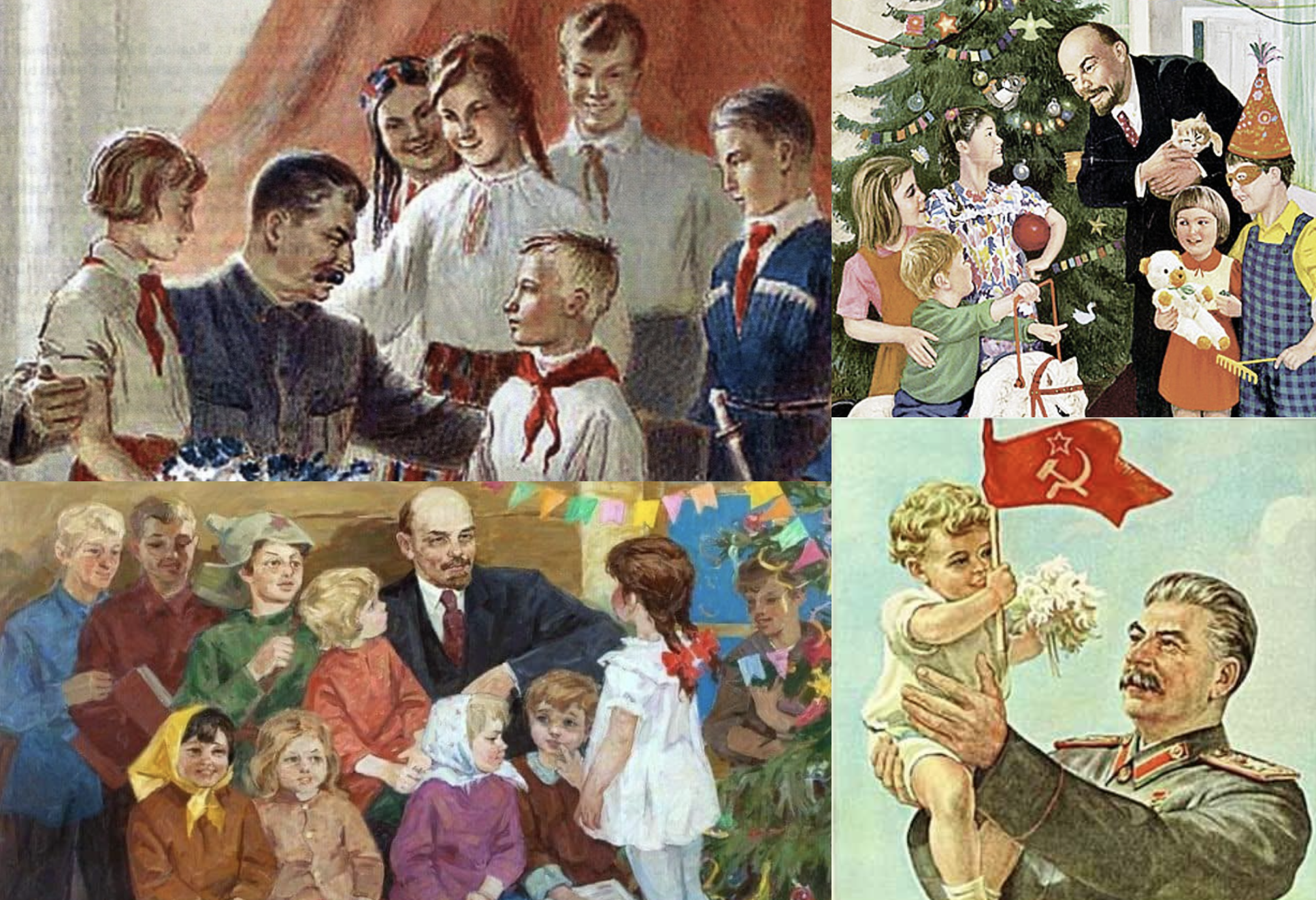
The theme of children was exploited even before the war began. The motivation for many Russians to kill Ukrainians was the thesis that "Ukraine has been bombing the children of Donbas for 8 years." However, after the full-scale invasion, the message of the propaganda has changed: now children are used as a symbol of a happy new life in the occupied territories. Months of living in basements, destroyed houses, lost friends and relatives remain out of the picture.
Why children? Because they mean positive emotions; who does not love children? That is why viewers and readers perceive and assimilate propagandistic messages faster and easier when they feature children. There is another, strategic goal: to achieve long-term influence by raising these children by the standards of their ideology, with the "correct" state symbols and holidays.
We investigated how children are used in Russian propaganda in the newly occupied territories. For this purpose, we used machine learning algorithms to analyze the entirety of the images from 13 Kherson occupation Telegram channels for the entire time of occupation (about 20,000 images in total). 2,400 of them contained human faces, and 420 featured at least one child.
Official posters "from the Kremlin"
Our facial recognition algorithm found children on official postcards and posters even in contexts where one would not normally expect them to appear.
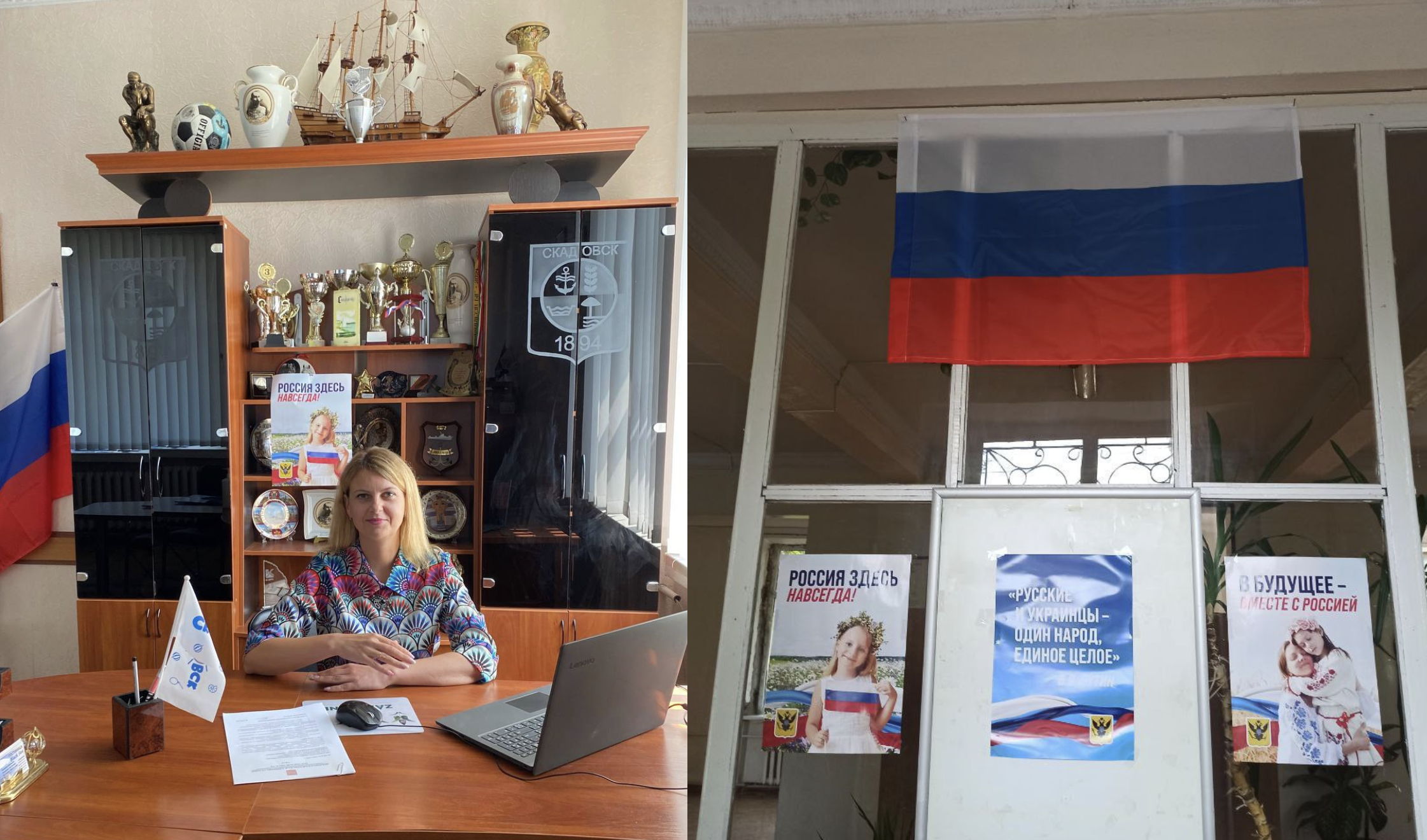
Propagandists in the occupied territories try in every possible way to bribe the population with various social programs or simply by promising an abstract better future. Therefore, most of the posters depict either young families with children or elderly people. Pictures with children are more positive, which is why they are preferred.
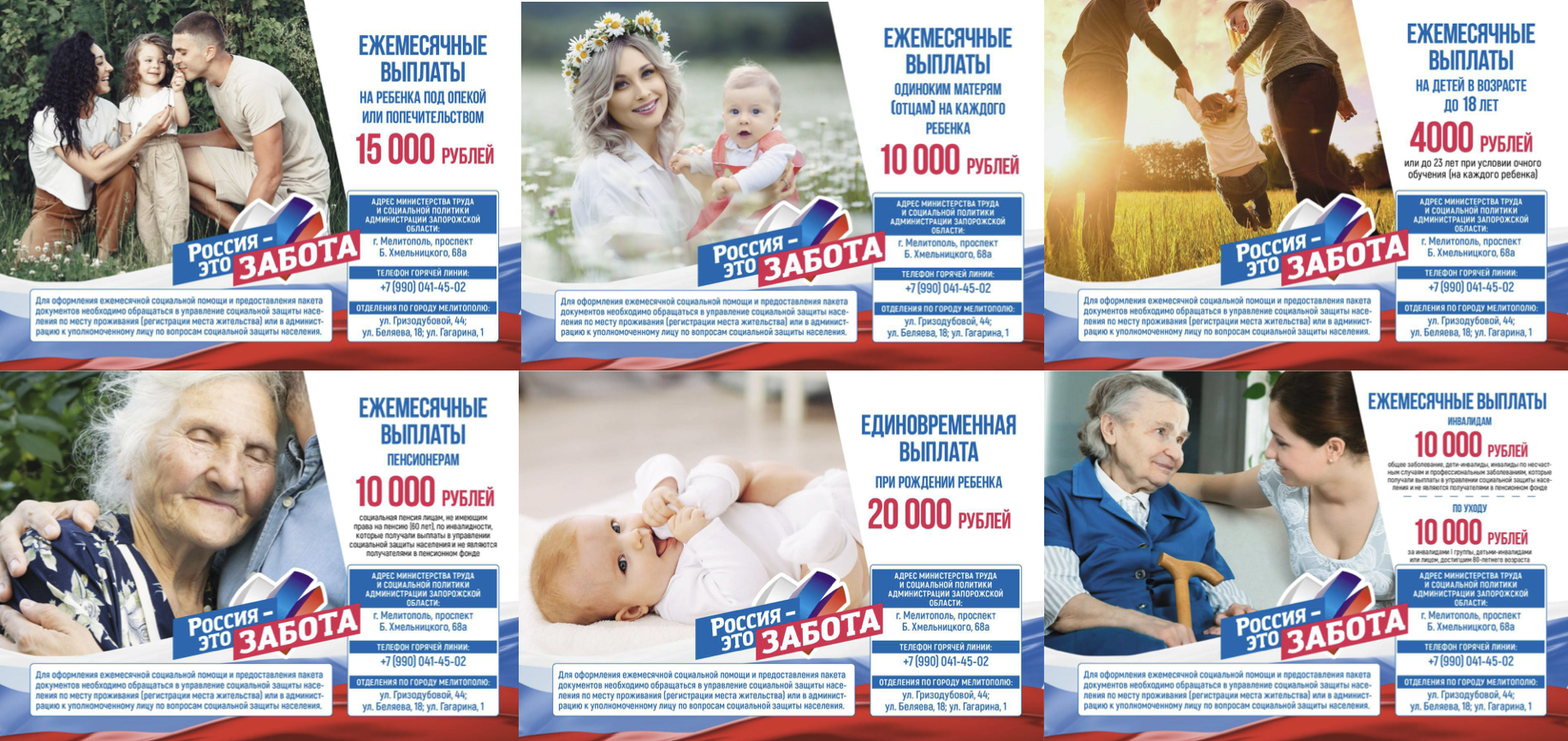
Young pioneers, the Russian flag and St. George's ribbon
Both in Russia and in the occupied territories, children are one of the ways to legitimize propaganda symbols (and through them, the government that they symbolize). St. George's ribbon on a cute girl works much more effectively than on the jackets of adult collaborators. On May 9 (Victory Day), veterans are greeted on camera not only by local politicians, but also by schoolchildren. And any show of children's creativity will quickly turn into a propaganda tool if everyone performs against the background of a huge Russian flag or shows kids holding white, blue and red balloons in their hands.
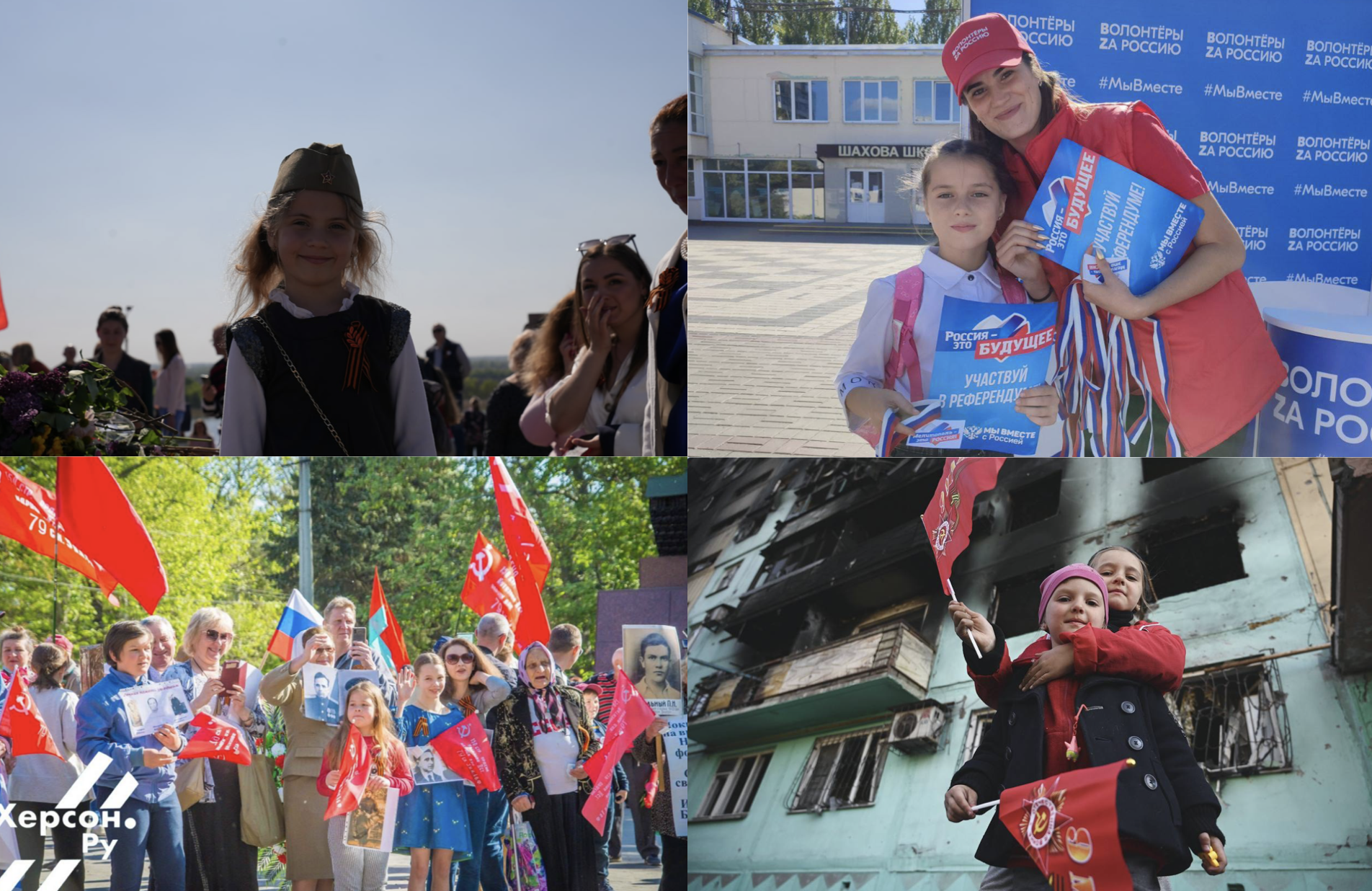
A happy childhood under the occupation
Russia Day, the Day of the City, the day of the (fake) referendum - all these events are organized with an ostensible purpose to make children happy. At least this is how the administrators of the occupation Telegram channels try to sell these holidays to their audience. They promise free entertainers and fireworks (during the war!), give out ice cream (along with Russian flags) and consider a free trip to Crimea to be the pinnacle of Russian generosity - all accompanied by mandatory photo ops and distribution of the images on Telegram channels, both local and even some all-Russian ones.
Since the beginning of the so-called "evacuation", children's "health trips" have become more active. Several dozen children have already been taken from the occupied territories to Russia or Crimea, without this activity ever being hidden. The message of Kirill Stremousov (a collaborator who recently died in an accident) about the removal of 46 "orphans from a baby's home" from Kherson to Crimea is accompanied by the hashtags "#Stalin", "#Putin" and "#СвоихНеБросаем" (#WeDon’tAbandonOurOwn), which is a perfect example of a mixture of propaganda theses and the exploitation of ostensibly caring for children.
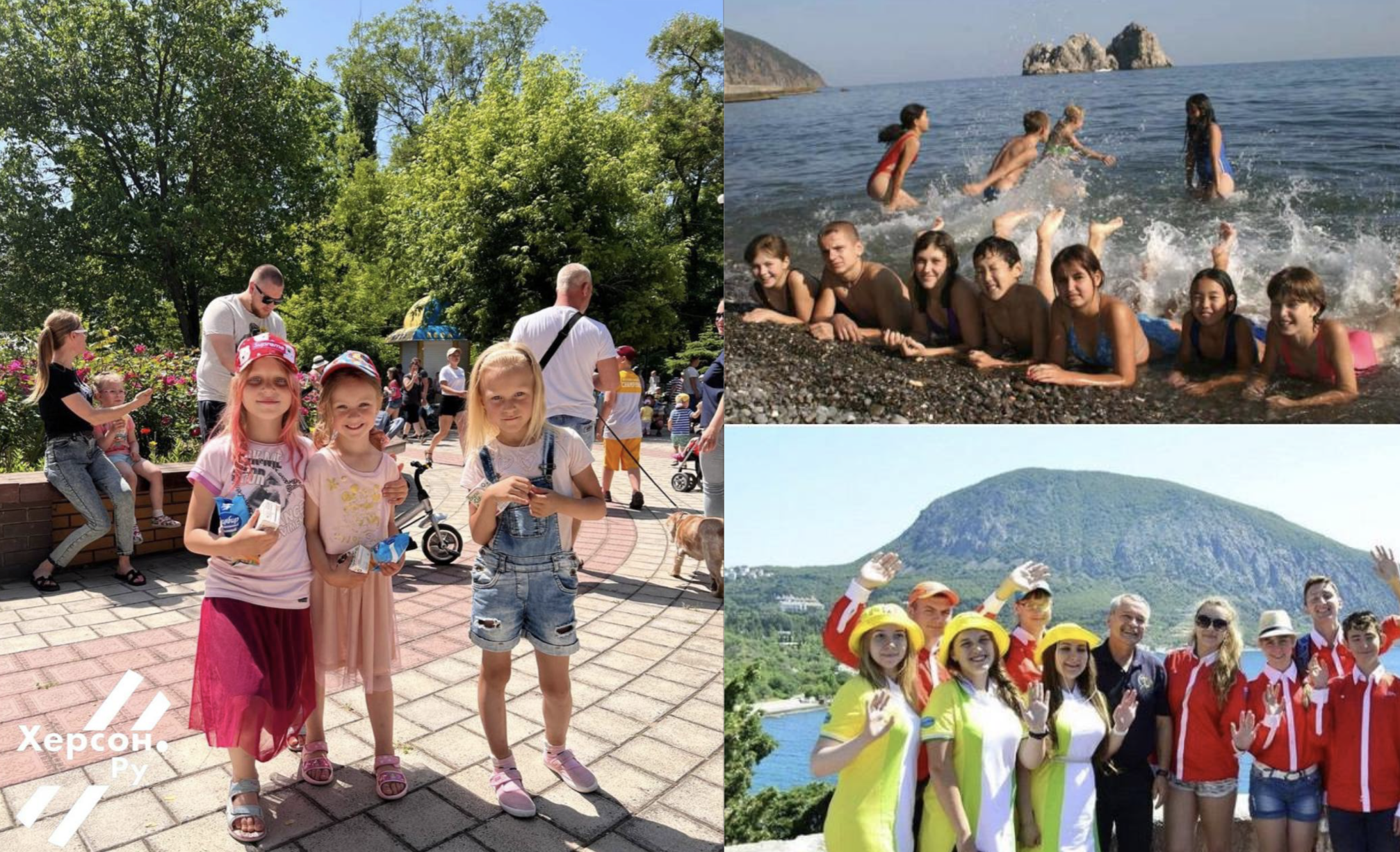
Russian charity is not only for pensioners
The Russian humanitarian aid is one of the main sources of information for the occupation channels. Quite expectedly, there are many children in the photos with evidence of "Russian charity". Packages and boxes with supplies are handed out in schools personally to students and mothers with children. Often, having your photo taken becomes a kind of "payment" for obtaining vital goods. Meanwhile, nobody ever cares about any information security, the right to privacy, or the parents’ consent to take pictures of the child or distribute them on social networks.
At least we have not seen any photos where the child's face is hidden / retouched. Nor is there any explanation provided of why the residents of Kherson began to need this humanitarian aid in the first place.
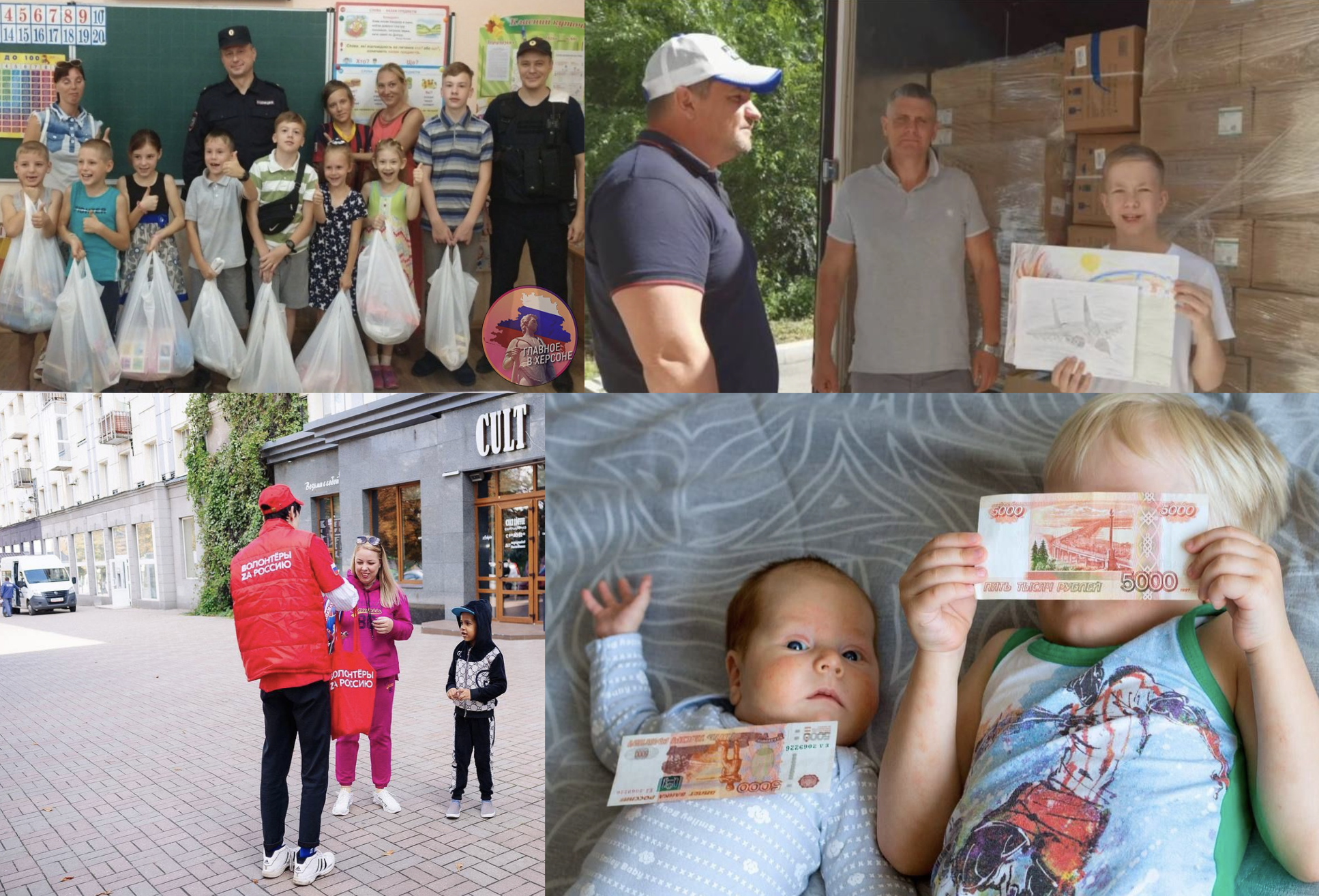
Children and the military
Russia is strong, it successfully advances on all fronts and controls the occupied territories well; to assure the readers of this, more than 1,000 images with military personnel and weapons were published on Kherson Telegram channels by the occupiers.
And the photos where the soldiers give something to the children (be it even military dry rations) should prove that everyone is happy with the Russian troops in Kherson. And you should not be afraid of them (unless, of course, you are going to a rally against the occupation).
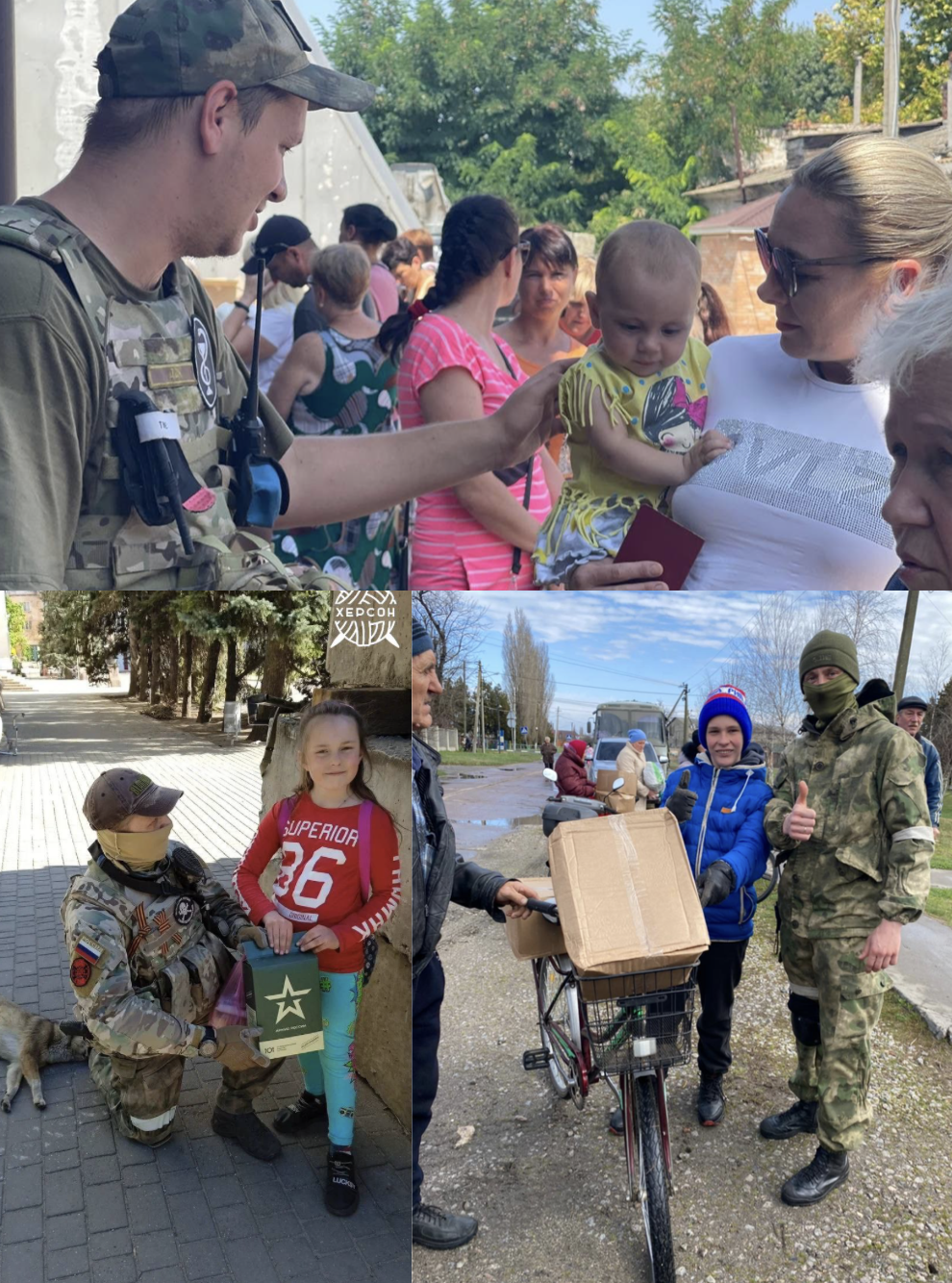
But the exploitation of children for the purposes of propaganda hides the great tragedy of their destroyed childhood, hindered access to quality medicine and education, constant intimidation and psychological pressure, forced removal to Russia, and many lost lives of children and their families. Not to mention the horrors of combat that they experienced.
Just as a reminder, as of October 27, 2022, at least 1,252 children were reported injured in Ukraine as a result of the full-scale armed aggression of the Russian Federation. 430 of them were reported dead
kherson_mohair, tipherson, herson_rus, NSDVCH, police_kherson_press, prokherson_ru, HersonVestnik, herson_respublika, kherson_live, VGA_Kherson, NewsKhersonLife, hercon_ru, herson_today

